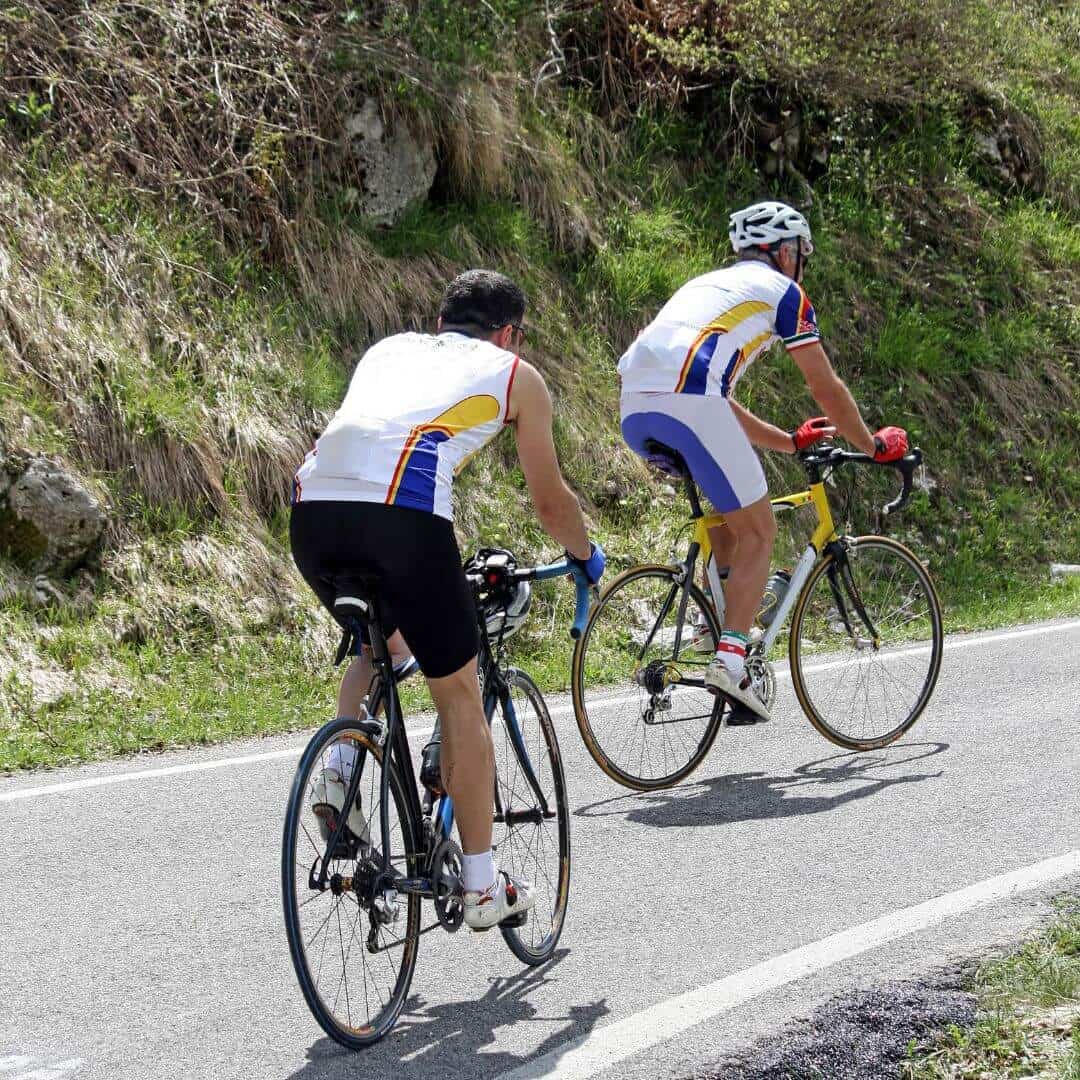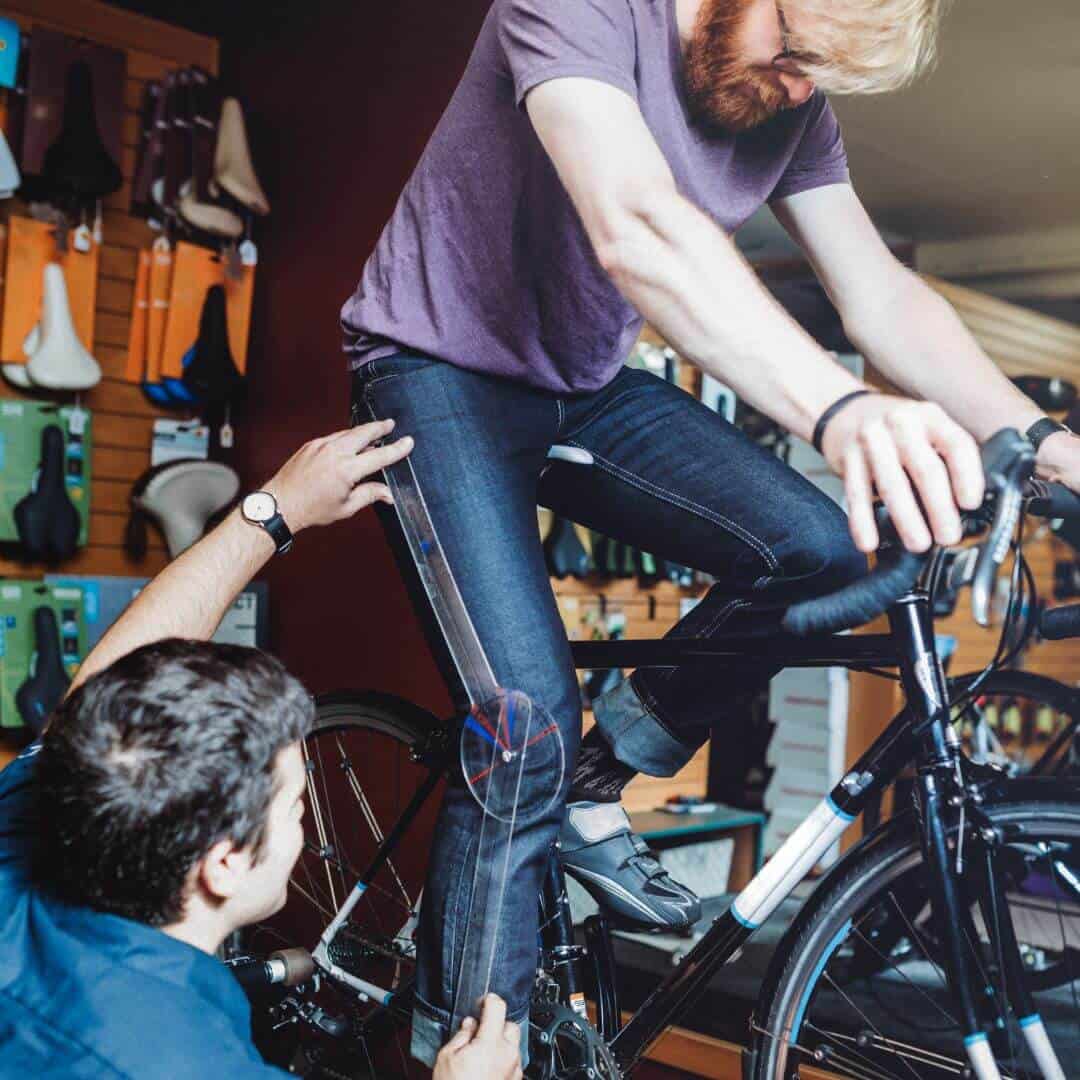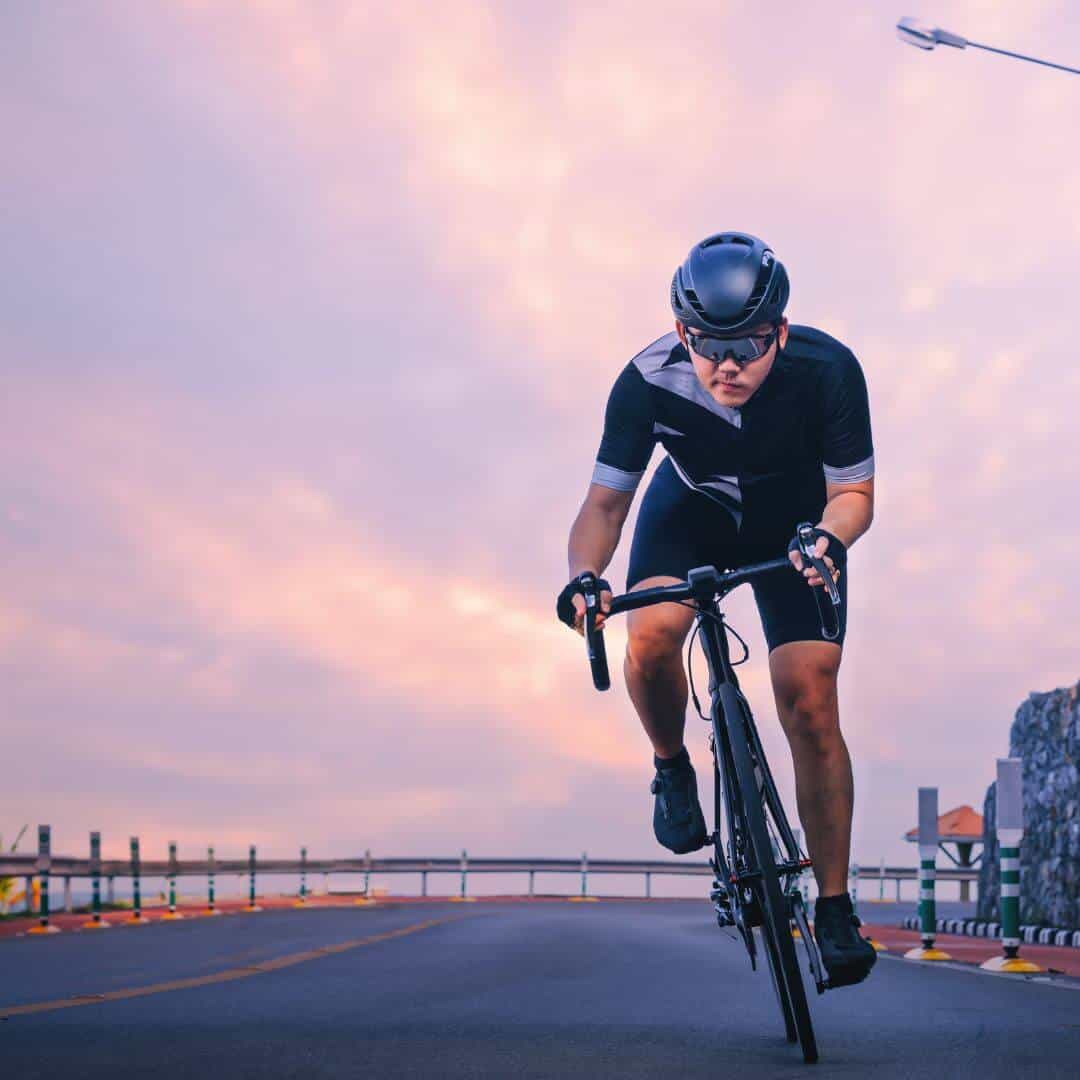Shin Splints Exercises
Read More >
Shin Splints are a painful condition affecting the inner aspect of the shin bone. Shin Splints are primarily aggravated by impact activities such as running or jumping. Still, in very irritable cases of Shin Splints, it can be painful to do any activity involving the lower limbs. This article will cover all your questions on shin splints and cycling.

Impact activities primarily cause Shin Splints, and cycling is a non-impact activity that cannot give you Shin Splints.
Due to the nature of a pedal stroke, there is potential to irritate the surrounding muscles and compartments of the Shinbone, such as Posterior Tibial Tendonitis and Anterior Tibial Tendonitis. In rare cases, compartment syndrome may also be misdiagnosed as Shin Splints.
Poor technique or positioning when cycling, especially when wearing cleats, can lead to muscular overload if an individual drops their heel too much on the downward phase of the pedal stroke. If they pull upwards from their feet on the upwards phase of the pedal stroke if can overload their Tibialis Anterior muscle..
If possible, we always recommend a bike fit with a qualified Physical Therapist or a trained Bike Fitter to optimise your bike position if you have Shin pain. However, you can make minor adjustments to your cycling position at home, including raising your saddle height.
Raising the saddle height reduces the risk of dropping your heel on the downward phase of the pedal stroke and increases the dorsiflexion angle of your ankle at the top of the pedal stroke. You could consider moving your saddle back to move the centre of pressure off the anterior shin.


You can cycle with Shin Splints as biking is a non-impact activity, and alongside swimming, it is the best form of cardiovascular exercise for people who have Shin Splints.
We recommend a high cadence throughout and stay in the saddle. Avoid steep hills, opting for smooth flat surfaces. Try 20-30 minutes initially, and if there is no increase in pain during or within 24 hours, you can gradually increase your cycling time by up to 10 minutes per bike ride.
If you have a suboptimal pedal stroke, you may be overusing your Tibialis Anterior Muscle; this can become overloaded and painful, leading to shin pain. Another cause of shin pain cycling is fatigue and lactic acid formation, although this is more common in the bigger muscle groups of the calves, quadriceps and hamstrings.


When walking, there is an element of impact, which can irritate Shin Splints’ pain, while no impact is involved in cycling. It is, therefore, better to cycle rather than walk with Shin Splints where possible. The Elliptical or Swimming is another form of non-impact exercise for cardiovascular fitness if you have shin splints.
Yes, you can use a stationary bike with Shin Splints. There is no impact involved during the use of a stationary bike so it will not irritate your shin splints.
This is not medical advice. We recommend a consultation with a medical professional such as James McCormack. He offers Online Physiotherapy Appointments weekly.
Related Article: Shin Splints Exercises